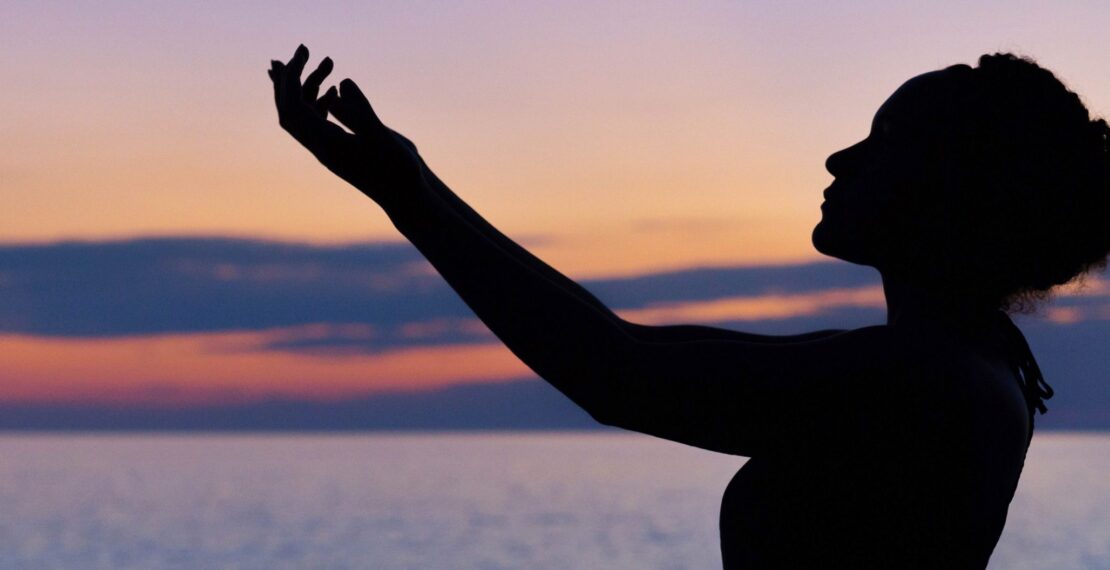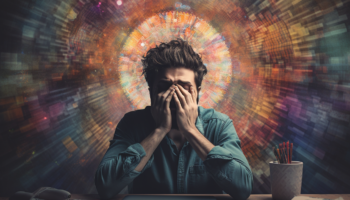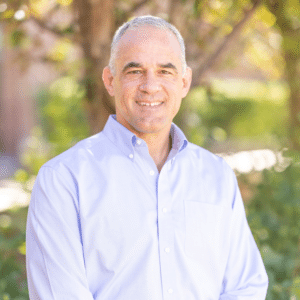“And lo and behold, I had what I simply could not deny being an experience of cosmic consciousness; the sense of complete, fundamental, total unity, forever and ever with the whole universe… Well, I was very embarrassed by this, because I thought, ‘Gee, you can’t get mysticism out of a bottle.’”
Many psychedelic users have echoed sentiments similar to what the philosopher Alan Watts says here about his second LSD experience. Since psychedelics re-emerged in Western culture, individuals have noted the mystical, blissful states these substances can sometimes elicit. The nature of these mystical states has led some people to explore various meditative and spiritual practices that describe similar states of transcendence.
So what exactly is the relationship between psychedelics and practices such as meditation? Do they produce the same sorts of internal states or are they distinctly different? Can they be useful tools for one another? Or are there certain conflicts between psychedelics and spiritual practice?
The overlap between the psychedelic world and the meditative world is clearly high. Poet Allen Ginsberg experimented with LSD for years before moving away from it in favor of his Buddhist practice. The opening speaker at Woodstock, where acid was more plentiful than food, was Indian yogi Swami Satchidananda. DMT researcher and former Zen practitioner Rick Strassman said that a vast majority of the monks at the monastery he attended had their first foray into exploring their consciousness through psychedelics. The same was also true for himself. “I’d say 90% of the people there… had their first glimpse of enlightenment during an LSD experience, but [they say] it was too fleeting, it was too chaotic, there were too many side effects, I came down.”
Listen to our podcast episode with Caitlin Thompson talking about: Can Psychedelics Heal Ancestral Trauma? or Click here to read the transcript
WHAT DOES THE DATA SAY?
In 1962, Harvard graduate student Walter Pahnke, working with Timothy Leary and Richard Alpert (later Ram Dass), administered psilocybin to a group of divinity students gathered in the Boston University Marsh Chapel to test whether or not the compound could facilitate a genuine mystical experience. Of the 10 participants who received psilocybin (half of the 20 received psilocybin, the other half placebo), eight of them reported having what was considered a genuine mystical experience. In follow-ups six months later and 25 years later, participants who received psilocybin all reported long-term positive changes in their lives.
One of the participants, Huston Smith, would go on to have an acclaimed career as a religious scholar, detailing his exploration of using psychedelics as a means to achieve a mystical state in his book Cleansing the Doors of Perception. Smith is open about his positive view toward psychedelics, but cautions, “The goal of spiritual life is not altered states but altered traits.”
Two years and many personal experiments later, Leary and Alpert, along with Ralph Metzner, published The Psychedelic Experience: A Manual Based on the Tibetan Book of the Dead.
WHAT DOES THE GURU SAY?
So can psychedelics lead a person to have altered traits and not only altered states? Richard Alpert offers a uniquely in-depth perspective on the issue of psychedelics and spiritual practice.
Working alongside Timothy Leary , Alpert delved head first into personal experimentation with psychedelics. To “deal with the matter of coming down” from the high he even went so far as to stay closed in a building for three weeks with friends taking 400 micrograms of LSD every four hours. Finding that he still eventually came down, Alpert traveled to India, and met the spiritual teacher Maharajji. Overcome with emotion and love in the presence of his guru, Alpert (soon to be Ram Dass) began an intense practice of yoga and meditation. Once during this initial visit, Ram Dass famously offered 900 micrograms(!) of LSD to Maharajji, who proceeded to eat the acid… “and nothing happened. Nothing whatsoever. He just laughed at me.”
However, doubts remained for Ram Dass, and upon returning a few years later, he once more was able to give LSD to Maharajji – this time 1200 micrograms!! An hour after dosing, Maharajji told Ram Dass, “These medicines were used in Kullu Valley long ago. But yogis have lost that knowledge. They were used with fasting. Nobody knows now. To take them with no effect, your mind must be firmly fixed on God. Others would be afraid to take. Many saints would not take this.” When Ram Dass asked if he could take the LSD, Maharajji responded, “It should not be taken in a hot climate. If you are in a place that is cool and peaceful, and you are alone and your mind is turned toward God, then you may take the yogi medicine.”
Ram Dass would himself later offer an alternative opinion he described as “the trap of getting high.” “How many times have you felt a moment of perfection – only to have it torn away the next moment by the awareness that it will pass?”
DID PSYCHEDELIC USE AND SPIRITUAL PRACTICE
CO-EVOLVE?
Indigenous use of psychedelics, while varied, is always framed in sacred, shamanic terms. Is it possible, then, that these substances played a role in the development of the spiritual practices we see today?
Psychedelic barnstormer Terence McKenna thought so. “I think that all of these techniques, mantra, yantra, tantra, whatever, they work incredibly well in the presence of psychedelics, leading me to suppose that what these are, are tools developed in the Paleolithic world of psychedelic magic and all we have now are these tools but we don’t have the original engine which drove them.”
McKenna preferred to keep psychedelics in a unique category rather than affiliate them too closely with meditation. “If by meditation you mean lying down or sitting down with your eyes closed, then I do that very much and I enjoy that… but I would never confuse that with the psychedelic experience.”
WHERE’S THE RESEARCH NOW?
Roland Griffiths of Johns Hopkins, who became interested in the possibilities of altered states after being introduced to Siddha Yoga, picked up where the Pahnke left off. In 2006, after a double-blind study with psilocybin and 36 participants, Griffiths published an article in Psychopharmacology entitled, “Psilocybin can occasion mystical-type experiences having substantial and sustained personal meaning and spiritual significance.” In it, he and his coauthors described how more than two-thirds of participants rated their experience as one of the five most meaningful and spiritually significant times of their lives. Fourteen months later, the feelings of significance had scarcely changed, and 64% of participants indicated an increase in well-being life satisfaction.
Griffiths is continuing his work with two related studies now underway. In one study, Johns Hopkins and NYU are combining forces to examine what happens when psilocybin is administered to professional clergymen from various backgrounds. In the other study, experienced meditators have been recruited to examine the combined effects of meditation and psilocybin.
By recruiting individuals with established backgrounds in spiritual practice, researchers are looking for more nuanced understandings of the psychedelic experience. Given the participants’ knowledge and expertise in the sphere of spirituality, they are well equipped to help tease out the subtleties of the psychedelics experience.
SET, SETTING AND SPIRITUALITY
One thing remains consistent: the importance of Set and Setting when it comes to creating a situation that is most conducive for the desired experience to occur. Being intentional about one’s mindset and the environment where the experience will take place is vital.
In the original study by Dr. Griffiths, participants tripped in a comfortable, living-room style area, with a couch, artwork, various mythological knick-knacks, and a selection of music ranging from Brian Eno to Mozart to the Beatles. Two therapists were available to offer support as needed. All participants reported regular participation in religious or spiritual activities, something Griffiths thought may help with interpreting their experiences.
FUTURE VISTAS
People use psychedelics for a number of reasons: aesthetic beauty, increased creativity, psychological development… and also for mystical bliss. Indigenous cultures have used psychedelic compounds for millennia in sacred contexts. Can a mystical experience be inherently helpful to someone? Or are further practices needed to effect real long-term change? According to Maharajji, “It’s better to become Christ than visit him – but even the visit of a saint for a moment is useful… but love is the most powerful medicine.”
With the advent of microdosing, there are now brand new possibilities to explore around how psychedelics may relate to meditation and other similar practices. Undoubtedly, there will be people looking to explore new and novel ways to integrate psychedelics with spirituality. What benefits will there be? What precautions should be taken? Research and personal anecdotes alike continue to shed light on psychedelics’ immense potential for effecting positive, deep, long-lasting change.







Psychedelics are a gateway to spiritual progress, but it is truly a double edged sword.
People toying around with these substances are playing with fire, especially those who welcome “energies” and “entities” whilst tripping.
Its basically a form of witchcraft, that is, feeling the presence of communicating with spiritual powers foreign to this earth, and which we have no control over.
Considering that psychedelic experiences are how many including myself were exposed to spiritual practice its safe to say they can allow for a new state of mind. Also with my meditation I’ve experienced very trippy like states that have me question the difference between intensive meditation and dmt.
Is it not better to learn meditation first to gain a firm grasp on its nature . this is what lama govinda suggest in the book multi-dimensional consciousness.